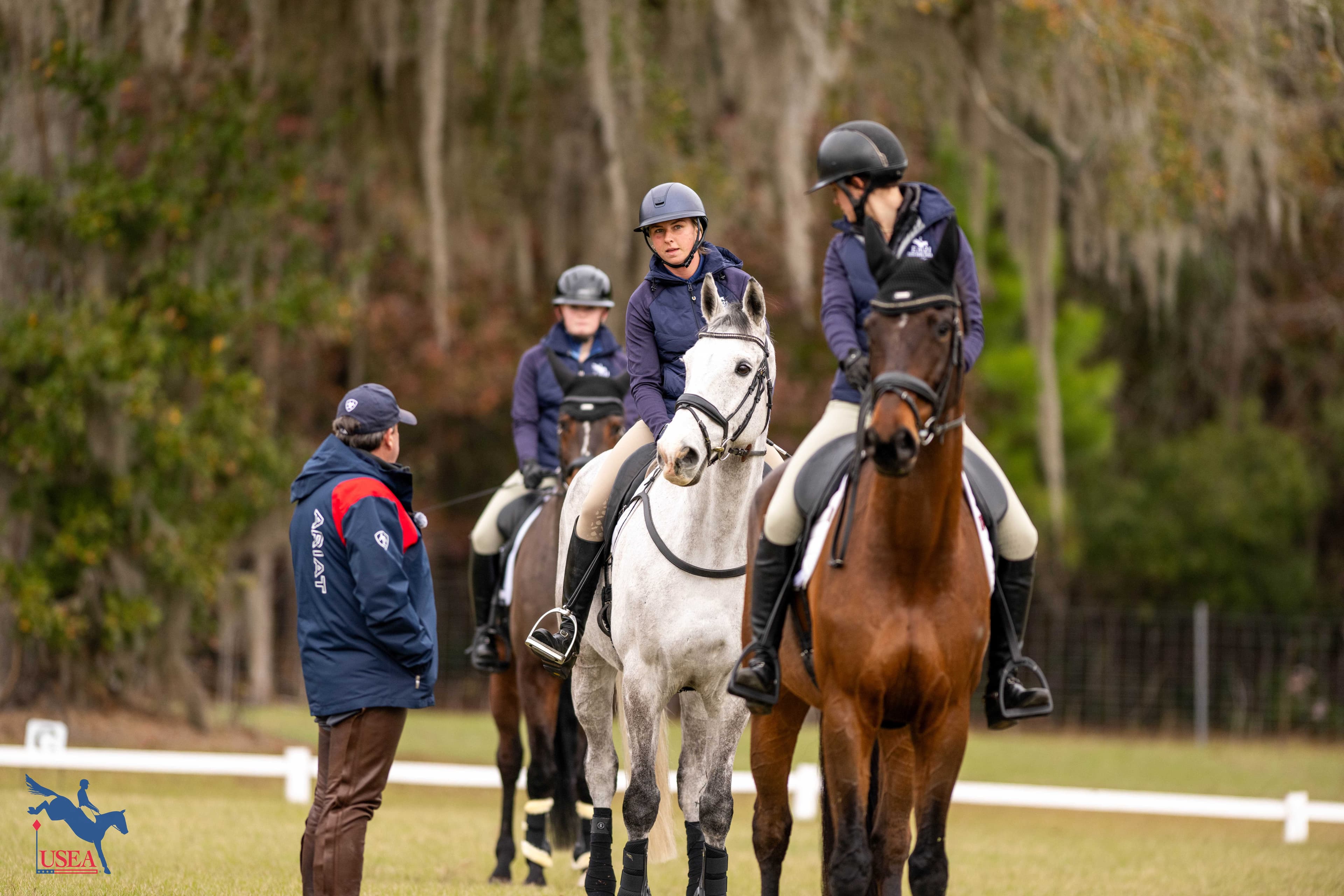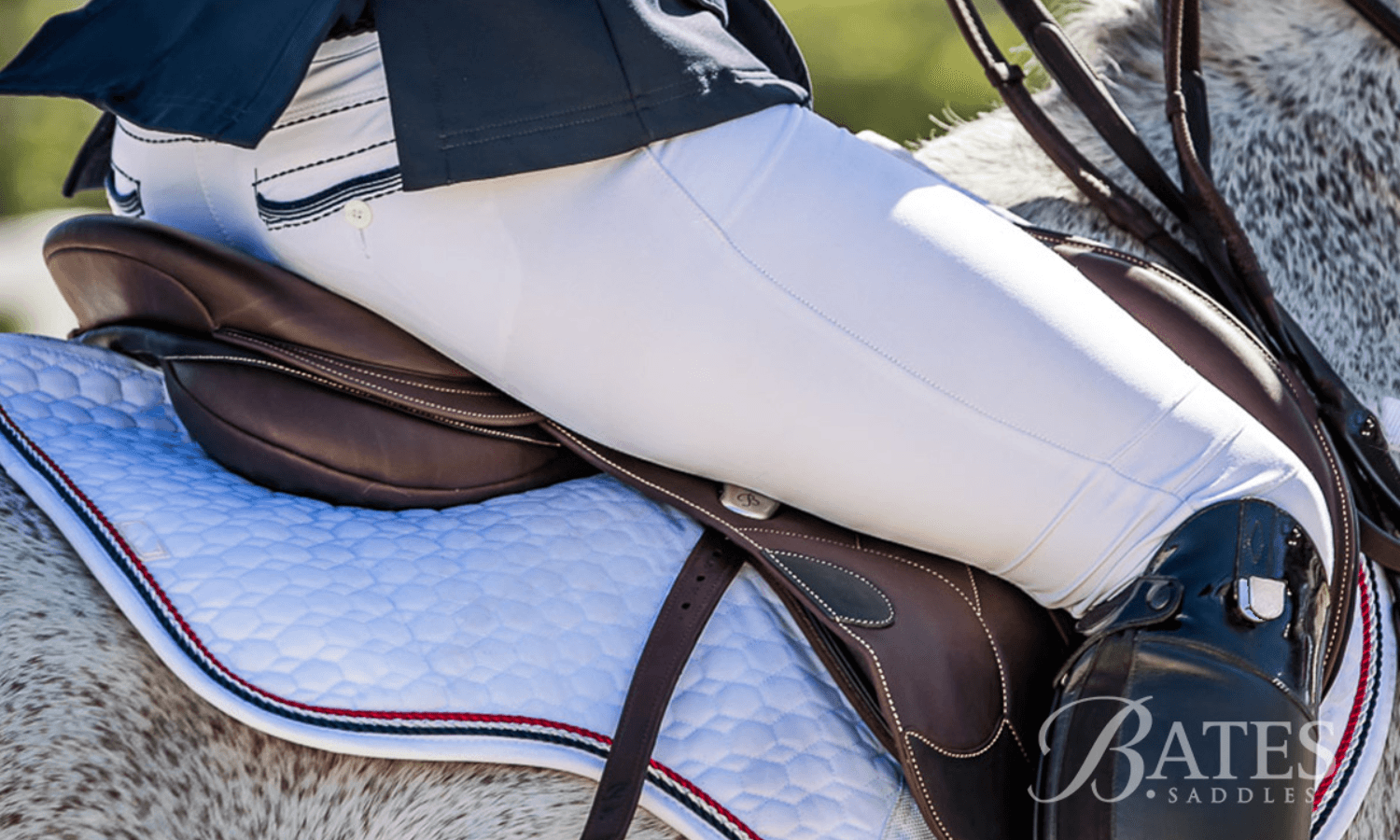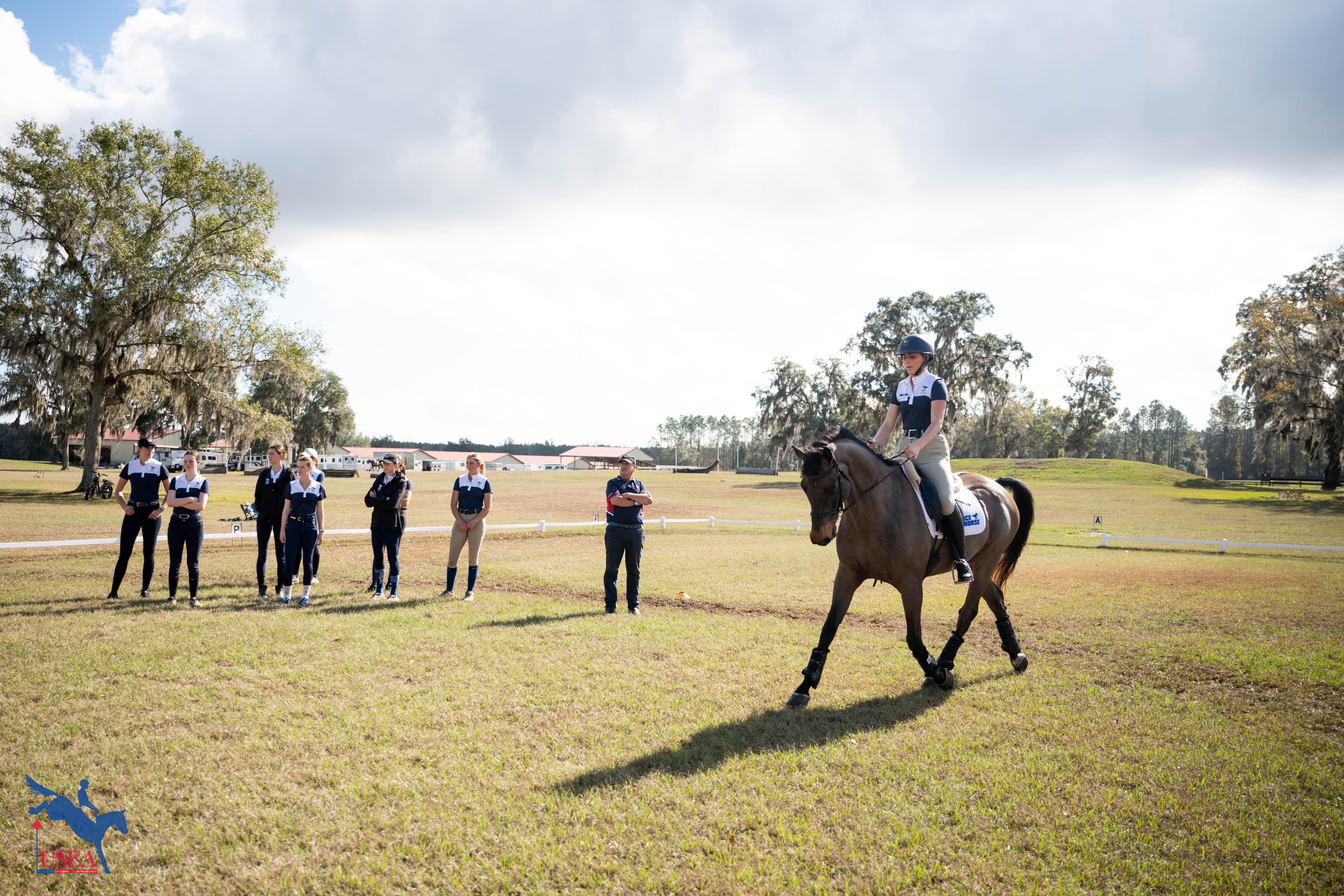Perfecting the Leg Yield with ICP Instructor Jim Graham

Looking to up your schooling game to enhance your performances in the show ring? The certified instructors of the USEA’s Instructors Certification Program (ICP) are here to help. This month ICP instructor Jim Graham, Level V, breaks down the step-by-step process of perfecting your leg yield on a circle. While this exercise was detailed with the Training and Modified level rider in mind, it can be adapted for riders of all levels. Check back next month after you have nailed your leg yield for the next step from this exercise!
“For Training level and Modified horses and riders, we have to incorporate lengthenings, leg yields, shoulder-fore and basic exercises along those lines. Today we are going to talk about leg yields. There are three things that any rider needs to have when they ride: coordination, balance in the middle of the horse, and we have to ride, to a degree, with certain strengths. Sometimes that strength is soft where you just whisper the aid, sometimes you have to be pressing a little stronger with your leg. We have to make sure throughout this exercise that the rider has those three things in mind. Coordination is the tough one for the lower-level riders as you have to coordinate the timing for the inside left leg while staying in the middle of the horse.
First, we need to talk about the hind legs. When the horse is compliant, moving forward without the rider kicking, and is meeting the rider at least halfway by going forward with the leg, generally, the horse’s hind legs do one of three things. While going forward they come under the horse and they thrust as you would see in a lengthening or extension. Secondly, they come under the horse and the horse pushes sideways, for example during a leg yield out on the circle or a counter leg yield in on the circle. Thirdly, the legs go up and down in what you can call “holding power” or engagement. That is where we start doing what I call “collection wanna-be.” The legs go up and down to create engagement and someday collection.
In teaching the rider to have the horse become compliant in these three areas, I will start them on a circle. I will use the example of a 20m circle to the left in a dressage ring. We begin this exercise after the typical loosening up of the horse and getting the horse into the rider’s brain. For this example, we will talk about the trot. On a circle left, we will move the horse’s legs sideways first, so I would ask for a leg yield. When the rider is posting, they are rising on the upbeat when the horse’s inside hind and outside front leg are airborne at the same time and down when the inside leg and outside foreleg are grounded.
We want to start moving the horse sideways to create the leg yield to the right. We want to give the horse’s inside hind leg a job when it is airborne because when it is on the ground, the leg is dead. You can’t move it sideways or get it to lengthen because it is “dead” or stuck. When the hind leg is on the upbeat, the rider will use the thigh and calf of their inner leg to press the horse to the right. Keep in mind that the rider’s outside aid, the outside rein, will guide and control the horse’s neck and head. The outside right leg should be slightly back of the girth. Assuming the rider can carry an even beat, we will call that rhythm, and a tempo, which I will call the rate of speed. When the rider asks the horse to move both forward and outward with the inside left hind leg, that rider will press their inside leg to move the horse forward, the hind leg then comes under and across towards the outside rein.
A big no-no is when the rider overrides the inside left rein and the neck becomes rubberized. That chokes down the horse’s hind legs. The horse must be straight or symmetrical on the 20m circle to do the leg yield. I call this the synchronization of the aids while maintaining the rate of speed, moving the horse both forward and outward when that left hind leg is airborne.
In the same sense, what do we do with the inside rein? We have to have some dialogue. It is a passive rein in that the horse must be just very slightly positioned left, not bent left. You just want to see the inside of the eyeball or the flare of the nostril. Bending moves the whole body of the horse. Think of it as BB: Bending the Body. Positioning is PP because positioning is from the Poll of the horse to the Pommel. You just want a slight positioning in front of the saddle.
So we position slightly to the left, initiate a soft inside jaw, and they use the inside left leg when the inside hind is airborne moving both under the horse and outward. The rider should maintain symmetry or straightness with the horse with the outside leg just slightly back of the girth and a steady outside rein to regulate how big or small the circle will be.
At this point, I will have the rider perform the leg yield on half of the circle from E to B. The big question is how do we maintain the rate of speed, the tempo, if the horse feels the lower leg pressing or squeezing? That is where we support with our core, our upper block is tall and elongated, and as we use the inside left leg we can close the thigh, knee, and groin to give a passive way of half-halt. We keep breaking this down, step-by-step, as the rider executes the leg yield on half of the circle from E to B. On the other side of the circle, I have the rider ride anatomically straight without any leg yield."
About the USEA Instructors’ Certification Program
Instructors are essential to the training of riders and horses for safe and educated participation in the sport of eventing. The USEA Instructors’ Certification Program (ICP) was initiated in 2002 to educate all levels of eventing instructors with crucial training principles upon which those instructors can continue to build throughout their teaching careers. ICP offers educational workshops and assessments by which both regular instructors, Level I through Level V, Young Event Horse (YEH) instructors, and Young Event Horse professional horse trainers can become ICP certified. Additional information about ICP’s goals, benefits, workshops, and assessments as well as names and contact information for current ICP-certified instructors, YEH instructors, and YEH professional horse trainers are available on the USEA website. Click here to learn more about the Instructors’ Certification Program.
The USEA would like to thank Stable Secretary and Parker Equine Insurance for sponsoring the Instructors’ Certification Program. Additionally, Parker Equine Insurance offers 5% off to all ICP instructors and Stable Secretary provides a 25% discount on their subscription services to all ICP instructors.














